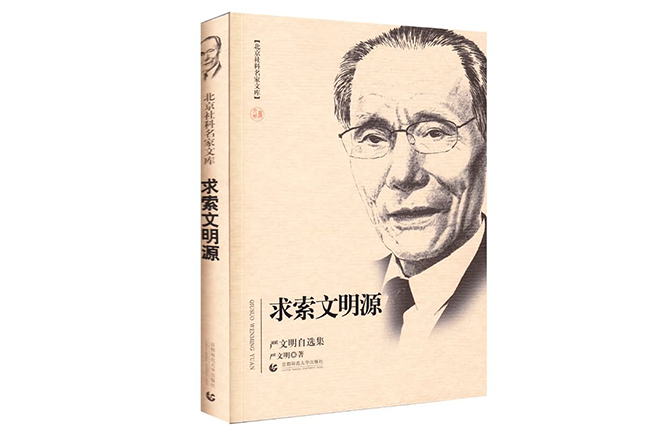Archaeological achievements of Yan Wenming

FILE PHOTO: Seeking the Origins of Civilization by Yan Wenming
The archaeologist Yan Wenming once described himself as a “farmer” who only cared about sowing seeds without concern for the harvest. This humble “farmer” diligently cultivated the field of archaeology throughout his life, where his tireless efforts lead to significant contributions.
Paleolithic and Neolithic archaeology
In the realm of Paleolithic archaeology, Yan recognized the ongoing debate between the “Out of Africa” theory and the multiregional hypothesis concerning the origin of modern humans, noting that Chinese evidence tends to support the latter.
Yan categorized Chinese Neolithic culture into five stages. During the early period (c. 12000–7000 BCE), humans primarily survived on foraging, fishing, and hunting. They began making stone tools, invented pottery, and formed small, settled communities alongside numerous cave settlements. The middle period (c. 7000–5000 BCE) featured significant developments in agriculture and animal husbandry, with the emergence of distinct economic-cultural regions. The late period (c. 5000–3500 BCE) witnessed further progress in agriculture, with the Yellow River and Yangtze River basins solidifying their central roles. Ground stone tools predominated, jade objects began to appear in many areas, pottery grew more sophisticated, and painted pottery flourished. Some regions also saw the emergence of larger and more complex settlements.
During the early Chalcolithic Period (c. 3500–2500 BCE), small copper items emerged, ground stone tools became more refined, and jade processing thrived as advanced techniques such as cutting, tube drilling, and polishing were widely adopted. Some regions even saw the emergence of high-end handicrafts, including lacquerware and silk. Agriculture was well-developed, with plowing being adopted in some places. Social stratification became evident, with fortified cities and differentiated burials signaling a trend towards civilization.
In the late Chalcolithic Period (c. 2500–2000 BCE), the use of copper increased slightly, and high-end handicrafts, such as jade, silk, lacquerware, and ivory items, continued to advance. Cities began to expand, with some regions showing signs of the earliest capitals. Social civilization developed further.
Xia, Shang, and Zhou archaeology
Yan was certain of the historical existence of the Xia Dynasty. He believed its administrative center was located around Mount Song in present-day Henan Province, and the Yiluo River basin, with its general territory extending to southwestern Shanxi and eastern Henan. In Shang archaeology, Yan observed that the Shang people were already active in what is now southern Hebei and northern Henan as early as the Xia period. This continued until King Tang founded the Shang.
The Zhou Dynasty initiated a large-scale eastern expedition, establishing states like Qi and Lu. In 1976, Yan excavated the Fengchu site at Zhouyuan in Shaanxi, unveiling the complete base of Building No. 1 of the Western Zhou, making significant contributions to Western Zhou archaeology.
Origins of rice cultivation
On the origin of rice cultivation, Yan proposed the theory of “marginal origin.” He argued that from the emergence of China’s rice cultivation until around 10,000 years ago, rice agriculture primarily spread from the middle reaches of the Yangtze River to the other areas.
Yan outlined the following stages in the origin of Chinese civilization: 4000 BCE approximately marks the emergence of Chinese civilization, evidenced by the emergence of central settlements in a few major cultural regions; 3500 BCE was a period of widespread civilization, characterized by significant social stratification, the appearance of central settlements and aristocratic tombs. The Chalcolithic period around 3000–2000 BCE, also known as the Longshan period in archaeology, saw the emergence of cultures such as the Liangzhu, Shijiahe, and Taosi. With the establishment of the Xia Dynasty, China entered the age of civilization.
Zhao Chunqing is a research fellow from the Institute of Archaeology at the Chinese Academy of Social Sciences.
Edited by REN GUANHONG
